The Huawei MateBook 16 Review, Powered by AMD Ryzen 7 5800H: Ecosystem Plus
by Dr. Ian Cutress on October 20, 2021 8:00 AM EST- Posted in
- Laptops
- AMD
- Huawei
- Matebook
- Ryzen
- Zen 3
- MateBook 16
- Huawei Share
- Ryzen 7 5800H
Graphics Performance: Vega 8 in Mobile
The world of mobile graphics is somewhat of a wild west right now. Both AMD and Intel equip all their mobile processors with, at least physically, the same configuration from top to bottom in their stacks. Intel has a base 96-EU Xe graphics solution that goes in all of its 15 W to 65 W mobile processors, while AMD has a Vega 8 solution that also goes from 15 W to 45 W and above. That means the graphics performance of these parts matters a lot on the processor performance being used, how well the power is managed between the CPU and GPU, but also the memory solutions.
This is where the Vega 8 inside the Ryzen 7 5800H might falter. The best design for this processor would be to enable LPDDR4X memory, with a 68.2 GB/s bandwidth. That configuration is typically used for super thin and light ultrabooks with U-series processors. The bigger the system, the more likely you are to end up with regular DDR4-3200, which in dual channel mode goes up to 51.2 GB/s bandwidth. This is also because most big H-series systems come with discrete graphics, and so DDR4 vs LPDDR4x is more a discussion about cost.
That being said, the Vega 8 graphics solution typically has to game at lower resolutions and quality settings, where CPU performance matters more. Between the synthetic and real-world gaming tests, this could be interesting.
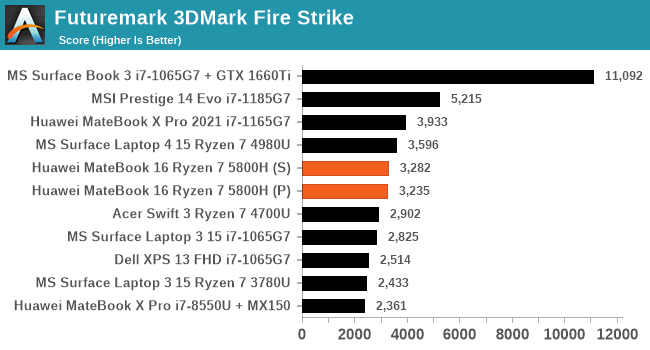
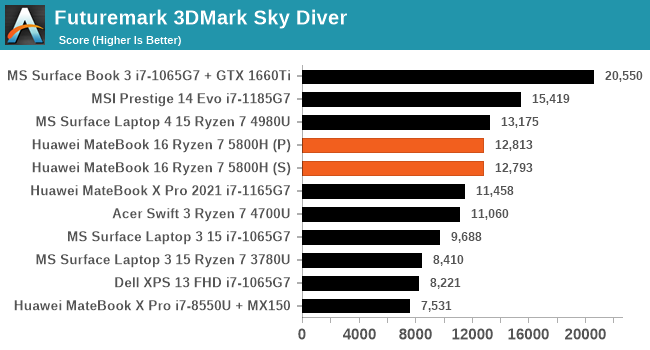
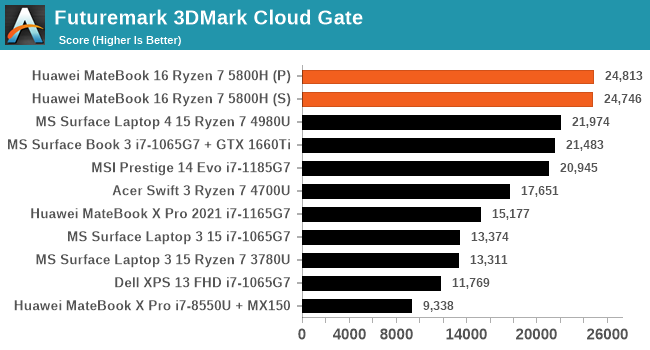
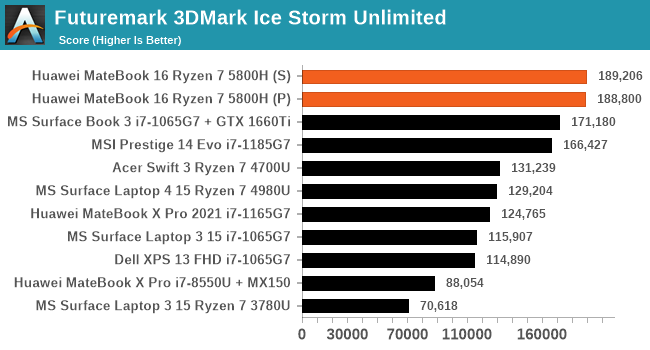
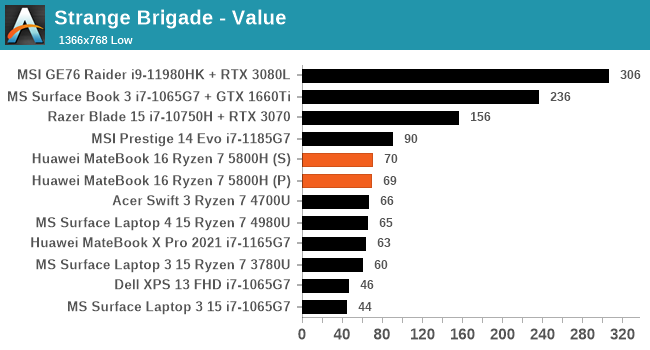
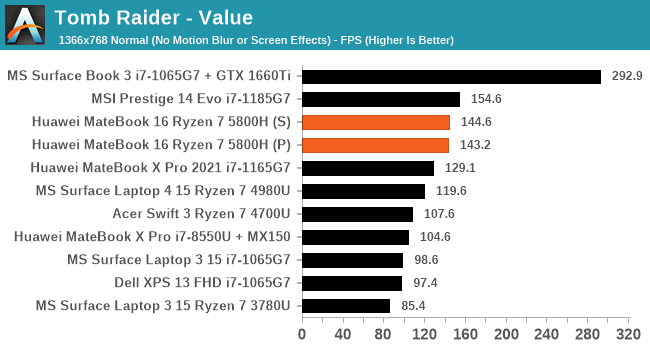

Overall we’re seeing small improvements compared to Zen 2 processors with integrated graphics, however the Vega 8 solution still sits behind the Intel Core i7-1185G7, which is usually equipped with LPDDR4X.










87 Comments
View All Comments
anandcx - Wednesday, October 20, 2021 - link
Gram 17 has 80wh battery, you have linked a two years old model you fool. Since 2020 all Gram 17's have 80wh battery, this is the link for 2021 model: https://www.lg.com/us/laptops/lg-17z90p-k.aas9u1-u...Prestissimo - Wednesday, October 20, 2021 - link
What? Battery is quite small for a 45W CPUbenedict - Wednesday, October 20, 2021 - link
I'm amazed companies keep pushing laptops with 512GB SDDs and pretend they are not crap. 1 TB of storage is the absolute minimum any new pc or laptop should have if you don't want to buy a second SSD in a few months.stephenbrooks - Wednesday, October 20, 2021 - link
I guess people can use them with external drives, but yes, if a laptop or PC has under 1TB of built-in storage it better be priced economically.Tomatotech - Thursday, October 21, 2021 - link
Yup. People don't realise that many SSDs slow down quite a lot as they get full up. My 1TB NVMe SSD is one of these that fold empty TLC space into a SLC buffer. What that means with my particular SSD is that it only runs at max speed up to about 66% full then after that it slows down, as shown in benchmarks and daily feel if it goes over around 650GB full.Practically, I treat it as giving me around 600GB of long-term working storage plus another 350GB of emergency / temporary storage. I knew this before buying it and I'm happy with it, though I would like my next SSD to be 2TB as I'm hovering round the 550GB long term storage mark at the moment.
TheinsanegamerN - Wednesday, October 20, 2021 - link
Not everyone compiles videos from 8k120hz video all day. 512GB is not a hindrance to most. And you can just upgrade it yourself instead of paying a premium to get it pre installed.Prestissimo - Thursday, October 21, 2021 - link
My laptop running W11 has a 128GB SATA 3 SSD and it's blazing fast for everyday tasks. All my data's on my internal storage as well, synced up to Google Drive. We don't need higher capacity PCIe 4.0 SSDs driving up base laptop prices for the general public.Stop speaking for everyone else, it's arrogant and presumptuous.
schujj07 - Thursday, October 21, 2021 - link
If all you aren't storing boat loads of videos, photos, music, or games then 512GB is plenty for OS/Application drive. My work laptop has a 256GB SSD and that isn't an issue as a lot isn't stored on the laptop.fishingbait15 - Friday, October 22, 2021 - link
The people who would buy a device like this are probably 50/50 web cloud and 50/50 local stuff. It doesn't have a dGPU so no AAA gaming and no content creation. People who are doing full stack programming or virtualization would likely opt for CPU with more cores. The days when people had massive libraries of purchased iTunes videos and TV shows are over ... that stuff is streamed now.DominionSeraph - Friday, October 22, 2021 - link
My C:\ drive is using 286GB, 200GB of which is games. Very few people use laptops for much more than internet/office tasks which doesn't even take 50GB if you nuke the hiberfil file. 512GB is overkill for most users.